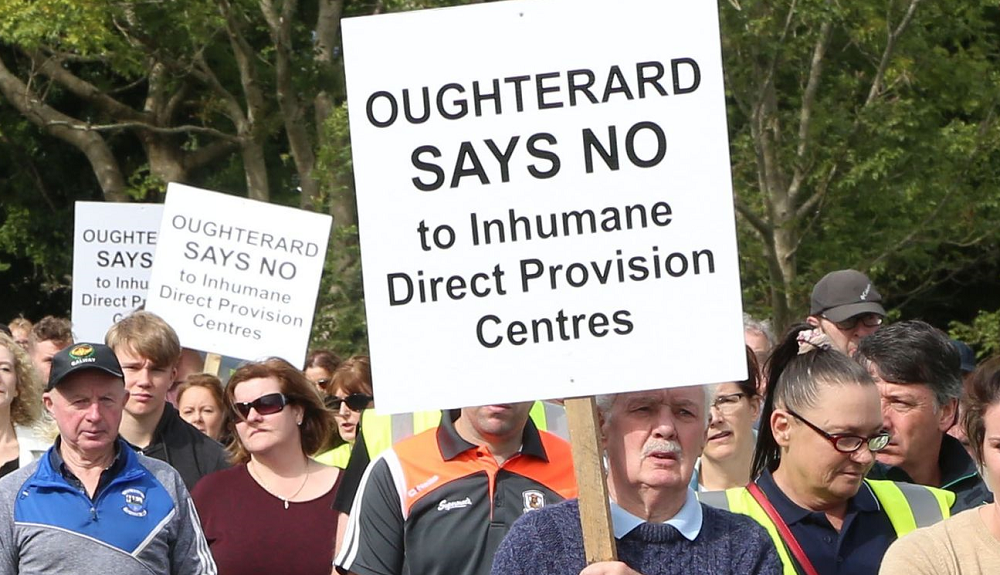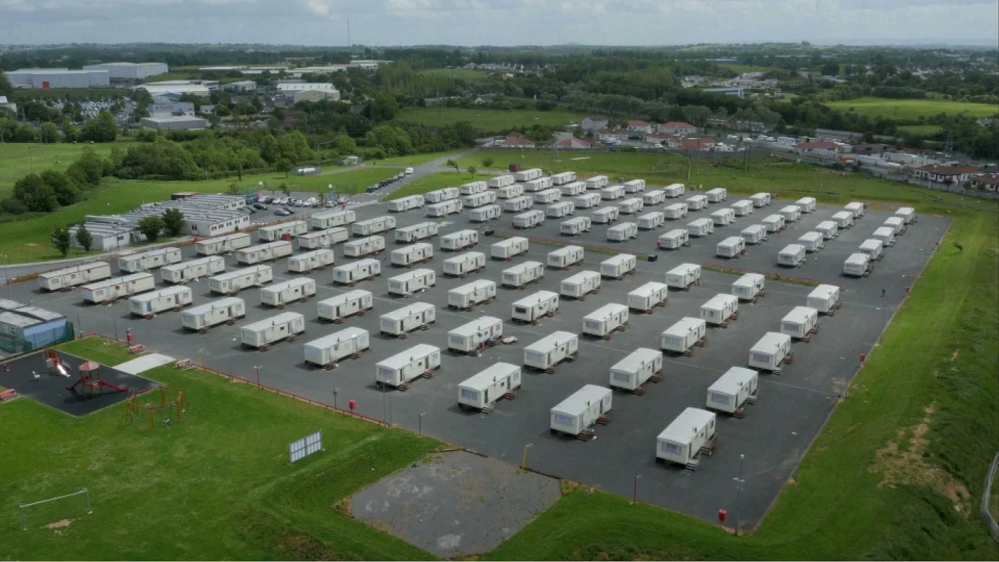By
AMANDA GLANCY

In recent weeks, the issue of migration has been to the fore of the public’s attention and the national and international news agendas.
The tragic incident of the 39 migrants who died in the back of a container lorry in Essex while attempting to illegally enter the UK exposed the desperation of migrants fleeing war, persecution, discrimination, and poverty, and the risks they are willing to take to escape their home countries. The public outcry and shock were just as keenly felt in Ireland as anywhere else.
Yet at the same time, playing out in the small town of Ballinamore, Co. Leitrim were protests against the opening of a new ‘direct provision centre’ for asylum seekers waiting for their applications to be determined and proceeded by State authorities. A few days later the flashpoint moved to Achill, where locals resisted another centre there.
Many commented on the fact that, on the one hand, Irish people expressed their revulsion at what had transpired in Essex but, on the other, in towns like Ballinamore, they were not prepared to accept people escaping equally terrible, if not worse, situations.
Like most things, the story is not as straightforward as it first appears. However, that hasn’t stopped some commentators viewing the event and the attitudes of the inhabitants of towns like Ballinamore through a very narrow prism.
Their narrative, while not so plainly written or spoken, does an injustice to local communities and asylum seekers.
They seem to presume that those who oppose direct provision centres are people from small, closed-off rural communities that do not have the liberal worldview of their more sophisticated urban cousins. The small mindedness of the opposers means they are unwilling to open their doors and hearts to asylum seekers who desperately need to be protected and supported. Worse, their attitudes are tinged with racism.
The commentators then point out that these are the very same rural communities that complain that their post offices and village shops are closing down and that their sports clubs are unable to field teams, yet still they reject the chance, even when it is handed to them, to take new families into their communities.
This simplistic interpretation of events gets things badly wrong.

A history of migration
As someone who grew up in nearby Roscommon, I know that Ballinamore and the surrounding region is no more ‘racist’ than any other part of Ireland, rural or urban.
The elderly who live there today, many of whom are typically the first to be accused of being close-minded, laboured in Britain in the ‘60s and ‘70s, a time when the infamous signs of ‘No Irish, no blacks, no dogs’ were commonplace. They know and experienced racism first-hand.
They also understand what it’s like to be a migrant seeking a better life in places like Britain, the US, and Australia. Today, their brothers and sisters and sons and daughters are still scattered across the globe.

The arrival of people from differing cultures and continents is not exactly a new phenomenon to people in Leitrim, either. In the ‘70s and ‘80s, many Germans and Swiss settled in the county to enjoy a more subdued pace of life. Local kids hung out with the new arrivals and took the school bus together.
In the ‘90s, refugees from the Yugoslav Wars settled in the county. Kurds and Iraqis followed, fleeing the regime of Saddam Hussein. This tradition of accepting asylum seekers and refugees to Leitrim continues today: 60 Syrian refugees arrived between January and July 2018 to the county’s capital town, Carrick-on-Shannon. Even Ballinamore has previously hosted asylum seekers.
Structural issues
There are many different factors that must be taken into account when considering why opposition to the location of direct provision centres is growing in Ireland.
One factor is the number of people the new centres were expected to house. In Rooskey, it was 80 in a village of 546; in Oughterard, it was 250 in a town of 1,300; in Ballinamore, it was 130 in a town of 914.
These are significant numbers relative to the size of these towns. Add in a lack of health services, public transport, and overcrowded school classes (yes, they’re a feature of rural schools too), and the reluctance of local communities, whether you agree with it or not, is at least understandable.
Failure to appreciate or, worse, address these issues places our entire asylum process at risk of collapse; last month, even the Department of Justice acknowledged that Ireland is now “perilously close” to being unable to provide any accommodation to asylum seekers at all.
Keep communications channels open
The success of direct provision projects hinges on consultation with local communities. In the case of these Western and Midlands towns, that consultation either never took place or was held only at the very last minute when the cat was out of the bag. It is hardly surprising, then, that local residents have consistently responded with anger.
Authorities are setting themselves up for continuous failure if they do not communicate with local communities in an upfront, transparent, and open way. Poor communication breeds suspicion, rumour, and untruths. Worst of all, it destroys trust between communities and State agencies.

This loss of trust will be difficult to fix, and the experience of the three towns suggests that when it comes to local views on direct provision centres, the contagion is spreading across Ireland. The real losers are vulnerable asylum seekers who need our support most of all.
At a national level, the extent of information on direct provision centres is no less illuminating. There appears to be 29 of them, but there is hardly any official information on where they are located. We do know that the State is now spending up to €120 million per annum on these facilities, but there is little transparency on whether this represents good value for money, how well this type of accommodation meets the needs of its occupants, or any other assessment of alternative or more effective means of accommodating and supporting asylum seekers.
Building a new system
Over the last 20 years, 60,000 people fleeing persecution and war have arrived in Ireland. For the public at least, this is where the story ends. We rarely, if ever, get a sense of how these people fare after, particularly those who are granted asylum. This is a wasted opportunity.
This problem can be solved with better and earlier communication. This is a two-way process, and the Department of Justice needs to both speak and listen in equal measure. It also needs to view asylum as more than just the ‘management of an application process’. There are myriad, ongoing communications opportunities to tell migrants’ stories in a positive and compassionate light.
The asylum seekers who put down permanent roots in Ireland are potential ambassadors for the generations of migrants that follow them. They can also play an important role in providing greater information to communities that may have concerns about direct provision.
A willingness to consider other forms of settlement away from the large direct provision centres, like smaller scale accommodation that adapts to asylum seekers and local needs, is another important consideration.
There are currently at least three State-sponsored groups—an inter-Departmental group, the Oireachtas Justice Committee, and an independent expert group—looking at the issue of direct provision and the asylum system in Ireland. Whatever their recommendations, it’s clear that we now need a greater consensus on the way forward. Early, effective, and open communications with all relevant stakeholders must be a fundamental part of any reform.
AMANDA GLANCY
Amanda is Director of Policy and Campaigns at PR360. She develops comms plans that are underpinned by strategic and policy considerations and achieve meaningful change. Her greatest strength is her ability to speed read, honed by many years of scanning newspapers for client coverage.

